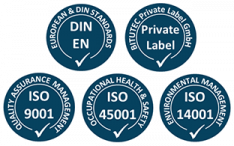

As a natural and ecological product, bitumen has been the first choice for structural waterproofing and road construction since ancient times.
Through continuous development and innovation, polymer-modified bituminous coatings (PMBC) have become essential in constructions. Thus, PMBC products are not only environmentally friendly, but also inexpensive and can be used on large scale. These are ideal conditions for waterproofing for construction. For example, a low-viscosity sprayable bitumen coating or a trowelable coating can be used to insulate basements. Bitumen tapes allow a wide variety of patching work on water gutters or roofs to seal leaks.
In the current standard, DIN 18533 Waterproofing of Structures that are in contact with the ground, the water-protection is divided into four classes.
This is non-pressing water, which does not press hydrostatically on the structure and can sink to the groundwater.
Gravel for example is a water-permeable subsoil. Furthermore, two cases must be distinguished here.
Soil moisture on the floor slab (W1.1-E) and soil moisture and non-pressing water on walls and floor slabs in contact with the ground (W1.2-E).
Water can press on the structure due to groundwater, floodwater or backwater. A distinction is made between moderate exposure to water under pressure (W2.1-E) up to a maximum of 3 meters and high exposure to water under pressure (W2.2-E) above 3 meters.
In the case of sloped waterproofing, the precipitation water is usually allowed to seep into the foundation soil by means of drainage or slopes, so that no water can accumulate. This means that the structure is not exposed to water under pressure.
W4-E classifies the water stress of splash and seepage water on the wall base.






